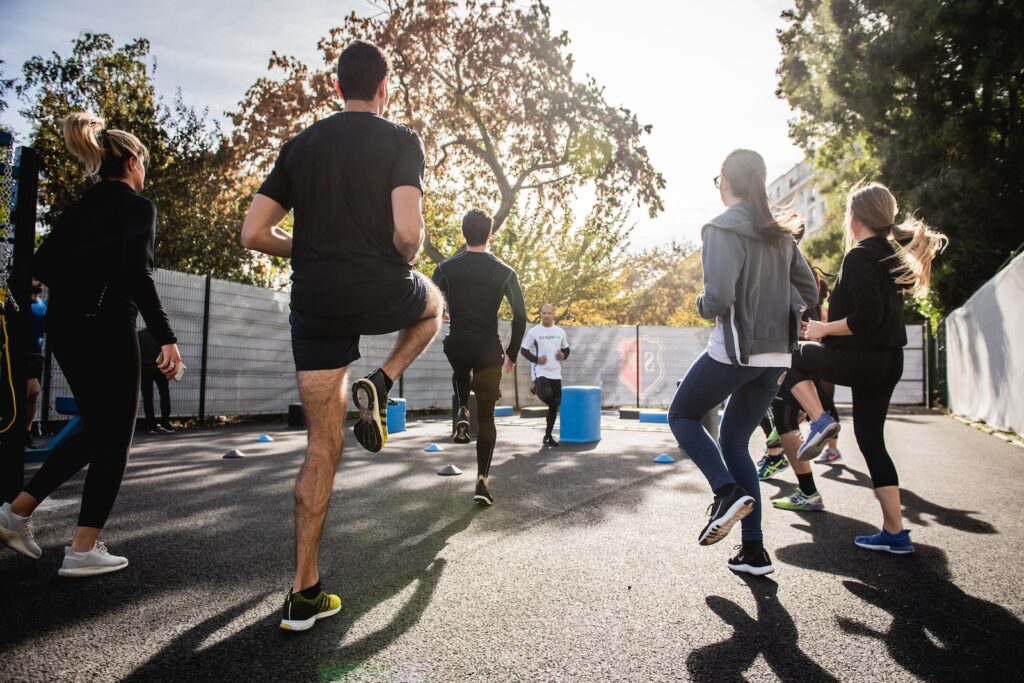Fitness is a term used to describe a state of physical and mental well-being that comes from regular exercise and healthy habits. Being fit means having the strength, endurance, flexibility, and balance to perform daily activities with ease and reduce the risk of developing chronic diseases. In this article, we will discuss the definition and components of fitness, the benefits of being fit and healthy, different types of fitness activities and exercises, and tips for starting and maintaining a fitness routine.
Definition and Components of Fitness
Fitness is a combination of various components that contribute to overall physical and mental well-being. The main components of fitness include:
- Cardiovascular Endurance: The ability of the heart and lungs to supply oxygen to the muscles during physical activity. Activities that improve cardiovascular endurance include running, cycling, swimming, and aerobic classes.
- Muscular Strength: The ability of the muscles to generate force against resistance. Strength training exercises such as weight lifting, push-ups, and squats help to increase muscular strength.
- Muscular Endurance: The ability of the muscles to sustain a level of activity for an extended period. Endurance activities include walking, hiking, and cycling.
- Flexibility: The range of motion in the joints and muscles. Stretching exercises such as yoga and Pilates improve flexibility.
- Body Composition: The proportion of fat, muscle, and bone in the body. Maintaining a healthy body composition through exercise and nutrition can help prevent chronic diseases.
Benefits of Being Fit and Healthy
Being fit and healthy has numerous benefits, including:
- Improved physical health: Regular exercise helps to prevent chronic diseases such as heart disease, stroke, and diabetes.
- Improved mental health: Exercise is known to reduce stress, anxiety, and depression.
- Increased energy: Regular physical activity can improve energy levels and reduce fatigue.
- Better sleep: Exercise has been shown to improve sleep quality and duration.
- Improved self-esteem: Achieving fitness goals can boost self-confidence and self-esteem.
Different Types of Fitness Activities and Exercises
There are many different types of fitness activities and exercises to choose from, including:
- Cardiovascular Exercise: Activities that raise the heart rate and improve cardiovascular endurance, such as running, cycling, swimming, and dancing.
- Strength Training: Exercises that use resistance to build muscular strength and endurance, such as weight lifting, push-ups, and squats.
- Flexibility Training: Stretching exercises that improve range of motion and flexibility, such as yoga and Pilates.
- Balance Training: Exercises that improve balance and stability, such as yoga, tai chi, and standing on one foot.
Tips for Starting and Maintaining a Fitness Routine
Starting and maintaining a fitness routine can be challenging, but the following tips can help:
- Set realistic goals: Start with small, achievable goals and gradually increase intensity and duration.
- Find an activity you enjoy: Choose an activity that you enjoy and look forward to doing.
- Schedule exercise into your day: Treat exercise like any other important appointment and schedule it into your day.
- Mix it up: Incorporate a variety of activities and exercises to keep your routine interesting and challenging.
- Stay motivated: Track your progress, reward yourself for achieving goals, and enlist the support of friends and family.
In conclusion, fitness is a state of physical and mental well-being that can be achieved through regular exercise and healthy habits. By understanding the definition and components of fitness, the benefits of being fit and healthy, different types of fitness activities and exercises, and tips for starting and maintaining a fitness routine, you can take steps towards improving your overall health and well-being.





